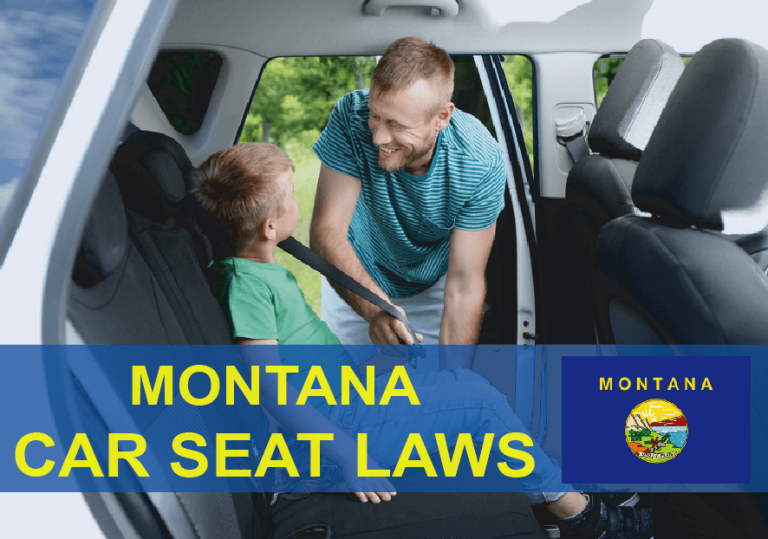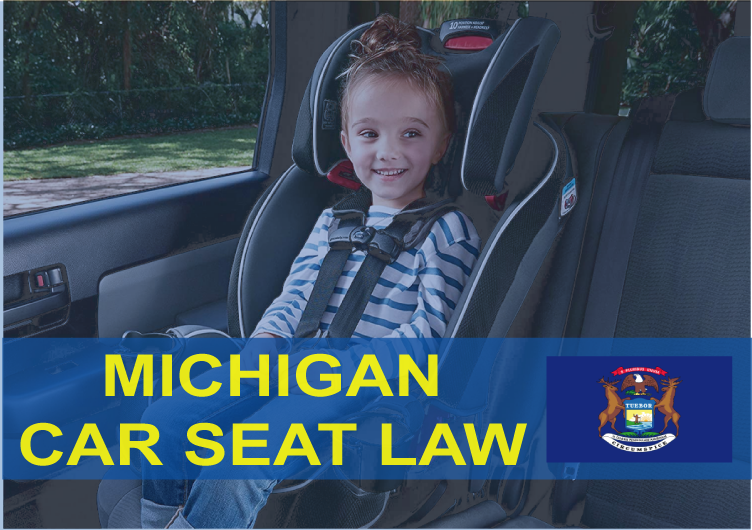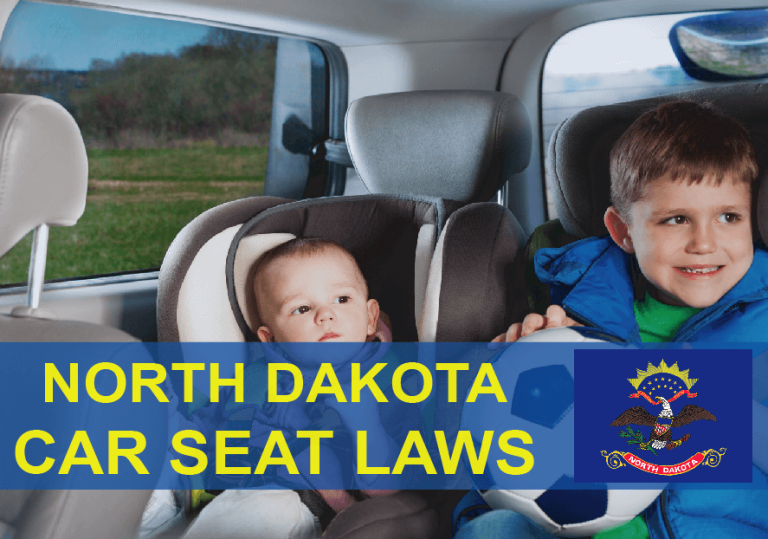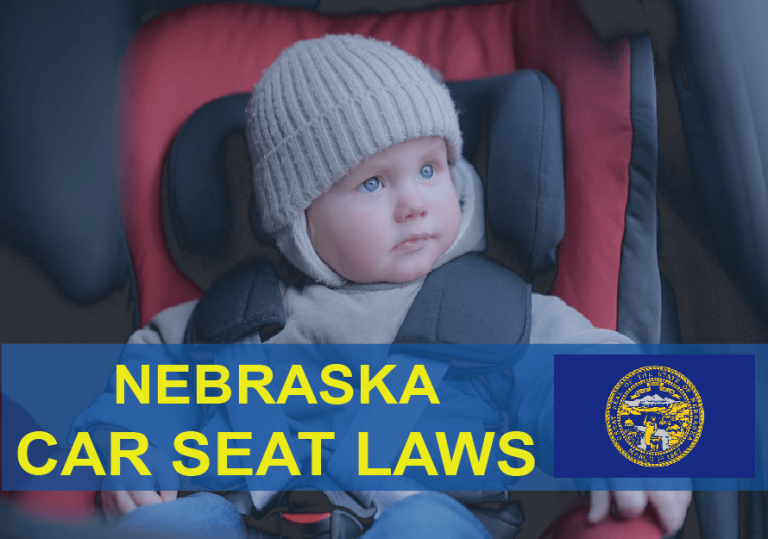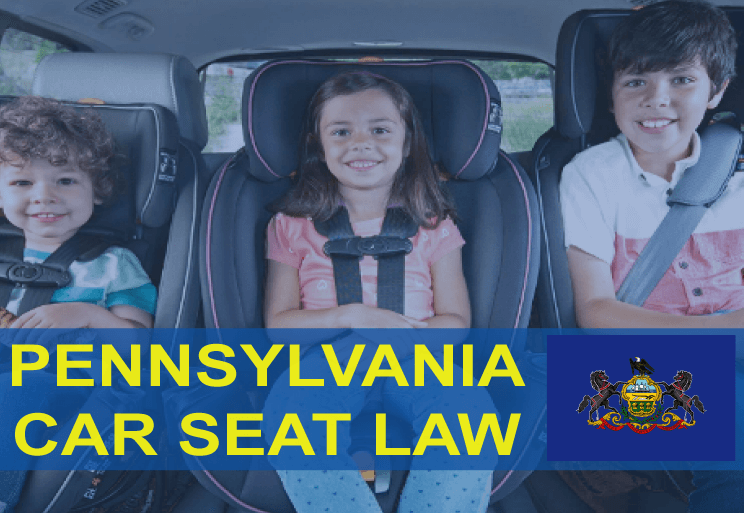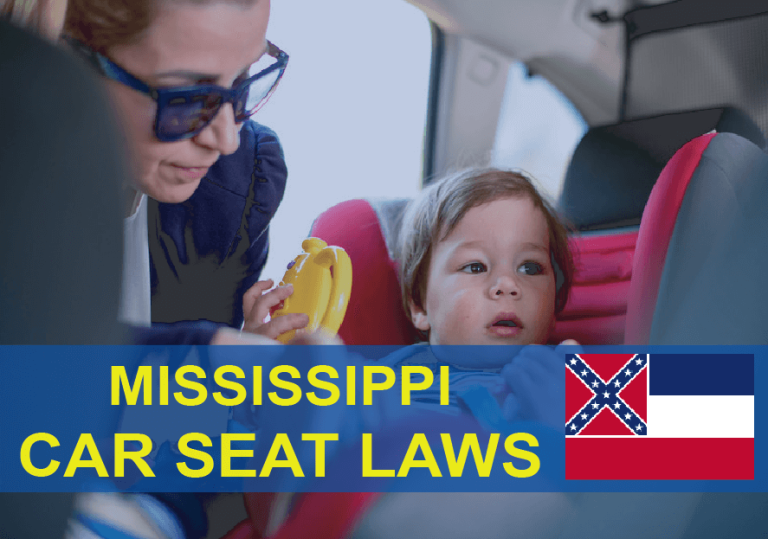Nevada, located in the southwest, is home to world-class tourist attractions such as Las Vegas, the Hoover Dam, and Reno, as well as some of the world’s most breathtaking deserts. If you are a Nevada parent or are considering driving through this unique state with your children, you should read this article thoroughly.
This article discusses the Nevada car seat law and how it affects you. It provides useful information about how you can properly install your child’s car seat in your vehicle, explains the consequences of failing to comply with the law, and offers tips on what to do if you need help.
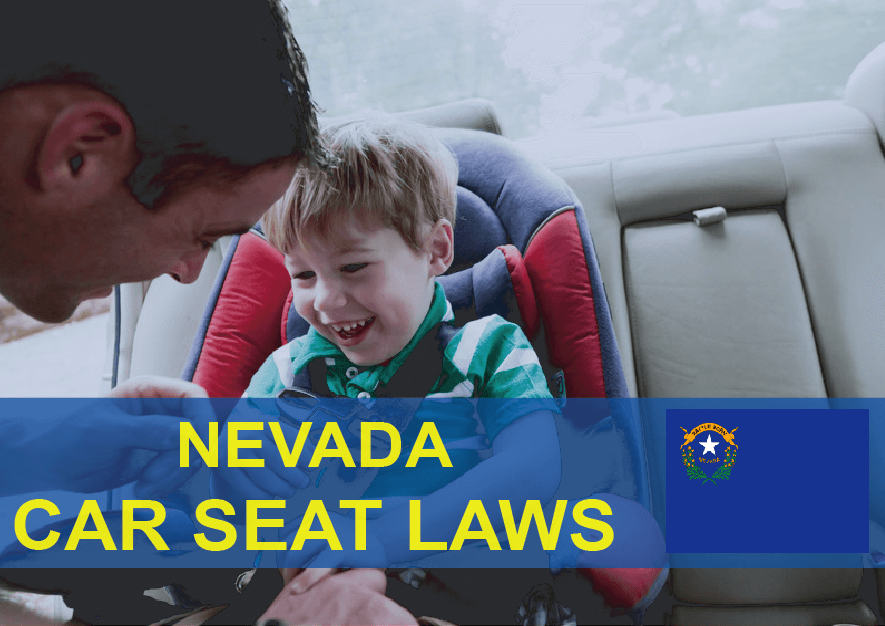
- Nevada Car Seat Laws
- Nevada Rear-facing Car Seat Law
- Nevada Forward-facing Car Seat Law
- Nevada booster seat law for young kids
- Requirements for children to use the front seat in Nevada
- Taxi Car Seat Law in Nevada
- Nevada car seat replacement law after Accident
- Law on leaving a child in a car in Nevada
- Penalties For Violating Nevada Car Seat Laws
- When Can My Child Sit in the Front Seat in Nevada?
- Is it Illegal to Smoke in a Car with a Child in Nevada?
- Car Seat Inspections Help in Nevada
- Child passenger safety related videos Nevada
- More information and resources on car seat safety Nevada
- USA Child Passenger Safety Laws by State
Nevada Car Seat Laws
According to NRS 484B.157 of Nevada child passenger safety law,
“Any person who is transporting a child who is less than 6 years of age and who weighs 60 pounds or less in a motor vehicle operated in this State which is equipped to carry passengers shall secure the child in a child restraint system”
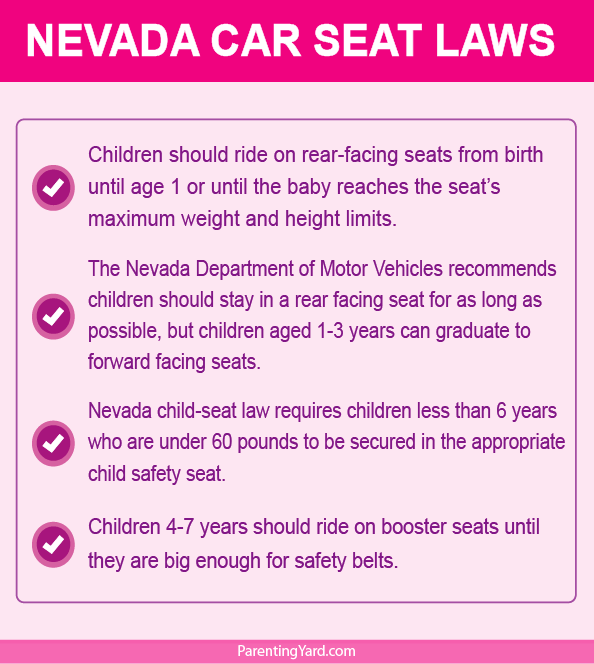
Nevada Rear-facing Car Seat Law
Nevada has no particular regulations regarding rear-facing seats. The Nevada Department of Motor Vehicles, on the other hand, recommends that children ride in rear-facing seats from birth to age one or until they meet the manufacturer’s maximum weight and height restrictions.
The majority of experts advise parents to keep their children rear-facing as long as possible. This is because the seat protects an infant’s most delicate components, including the spine and head, which are still developing.
Nevada Forward-facing Car Seat Law
The Nevada Department of Motor Vehicles encourages that children remain in rear-facing seats for as long as possible. However, children aged 1-3 years can move to forward-facing seats. Forward-facing chairs typically contain a 5-point harness and tether straps to secure a kid to the seat. Assemble the straps so that they are snug above the child’s shoulder. Two or more fingers should not be allowed to fit between the strap and the collarbone. The seat should be fitted securely in the rear seat and away from an activated airbag.
Nevada booster seat law for young kids
Children who have outgrown rear-facing car seats should travel in booster seats until they reach the manufacturer-recommended weight and height limits. Nevada’s child-seat law requires that children under the age of six and weighing less than 60 pounds be strapped in an approved child safety seat. This means that your child can legally quit using a booster seat if they exceed the child seat law’s weight or age requirements. The Nevada Department of Motor Vehicles, on the other hand, recommends that children aged 4-7 years ride in booster seats until they are large enough to wear safety belts.
Requirements for children to use the front seat in Nevada
According to the Nevada Department of Transportation, children should ride in the back seat until they reach the age of 12. This is not, however, a law, but a best practice.
If you are confused about whether your child should use a booster seat or an adult seat belt only, this simple test will help you decide.
The Five-Step Seat Belt Fit Test:
- Is the child able to sit all of the way back against the auto seat?
- Are the child’s knees able to bend comfortably at the edge of the vehicle seat?
- Is the belt crossing over the shoulder between the neck and arm?
- Is the lap belt as low as possible, with the thighs?
- Is it possible for the child to remain in this position the whole journey?
If you answered “no” to any of these questions, your kid is not ready for an adult seat belt and still requires a booster seat to travel safely in the car. Boosters are popular with kids since they are more comfortable!
Taxi Car Seat Law in Nevada
Taxis in Nevada are not required to follow the child car seat law. However, it is their primary responsibility to allow parents to install child safety equipment if they want. Parents should bring appropriate car seats for their children when they are traveling in a taxi.
Nevada car seat replacement law after Accident
There is no specific legislation in existence in the Nevada law that governs car seat replacement. Most seats, however, are replaced every six years. Check the expiration date on your seat or manual.
“NHTSA recommends that car seats be replaced following a moderate or severe crash in order to ensure a continued high level of crash protection for child passengers. Car seats do not automatically need to be replaced following a minor crash.”
Law on leaving a child in a car in Nevada
It is illegal to leave an unsupervised child under the age of seven in a vehicle. However, you may leave a child in a car provided he or she is accompanied by an adult of at least 12 years of age.
Penalties For Violating Nevada Car Seat Laws
In Nevada, if you don’t use a child safety seat, you could be fined between $100 and $500 and be forced to do community service for a first-time offense. The second time you break the rules, you could be fined between $500.00 and $1,000.00 and have to do community service for between 50 hours and 100 hours, too. You could lose your driver’s license for between 30 and 180 days if this is your third or fourth offense, or if you have done this before.
When Can My Child Sit in the Front Seat in Nevada?
In Nevada, there are no clear rules governing children’s usage of the front seat. According to the Nevada Department of Motor Vehicles, children under the age of 12 should ride in the back seat. Additionally, they insist on never placing rear-facing seats in front of an airbag.
This is because airbags can inflate dangerously, posing a hazard to kids. The department recommends that people traveling with children in the front seat turn off the airbag.
Is it Illegal to Smoke in a Car with a Child in Nevada?
In Nevada, there is no law prohibiting smoking in a vehicle with minor passengers. However, we do not believe that it is better to smoke if you have children inside your car.
Secondhand smoke is dangerous, and it is best to avoid smoking in a baby car. Secondhand smoke exposure causes a variety of illnesses in children, including thousands of preventable hospital admissions, including asthma and pneumonia. Secondhand smoke causes SIDS and if released over time can lead to lung cancer and heart attack.
Car Seat Inspections Help in Nevada
- 2.1.1 Car Seat Installation Assistance and Resources
- American Automobile Association Car Seat Help
- Bans on Smoking in Vehicles Carrying Children
- Car Seats Assistance
- CPS Technician Search: Find a CPS Technician
- Is it illegal to leave a child in the car?
- List of Nevada State Approved Family Vehicle Safety Program Providers
- NHTSA Directory of Stations
- North Lyon County Car Seat Inspection
- Summerlin Hospital Medical Center Car Seat Installation
- The Point of Impact Car Seat Inspection and Installation program
Child passenger safety related videos Nevada
How to properly install a child’s car seat
Car Seat Safety By Age
Live Q&A: Safety tips for car seats and booster seats
Is your child’s car booster seat safe?
More information and resources on car seat safety Nevada
- American Academy of Pediatrics Car Seat Recommendations
- Best Practices & Recommendations by IUSM
- Booster Seat Guide
- Centers for Disease Control (CDC) data, resources, recommendations, podcasts, and more
- Child Seat Recall Campaign Listing
- IIHS Child Safety
- Office of Traffic Safety – Occupant Protection
- Premature Babies and Babies with Medical Conditions
USA Child Passenger Safety Laws by State
FIND YOUR STATE’S CAR SEAT LAWS
Click on your state on the map below to see your state’s car seat law

